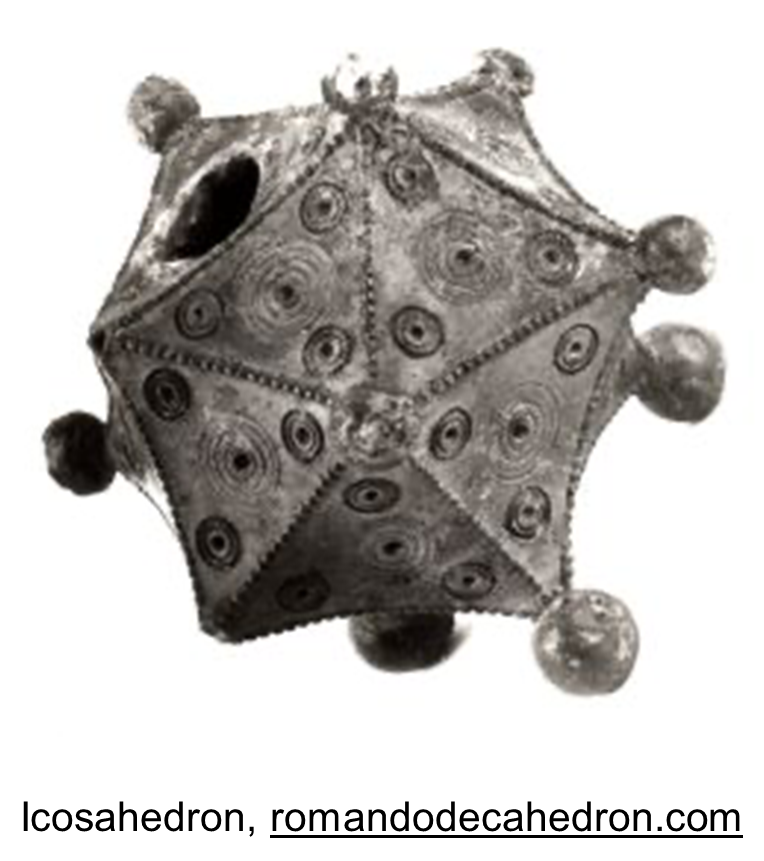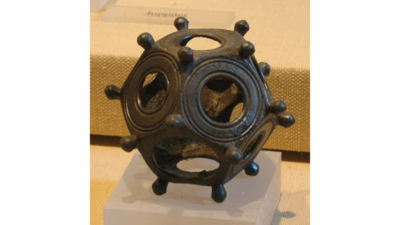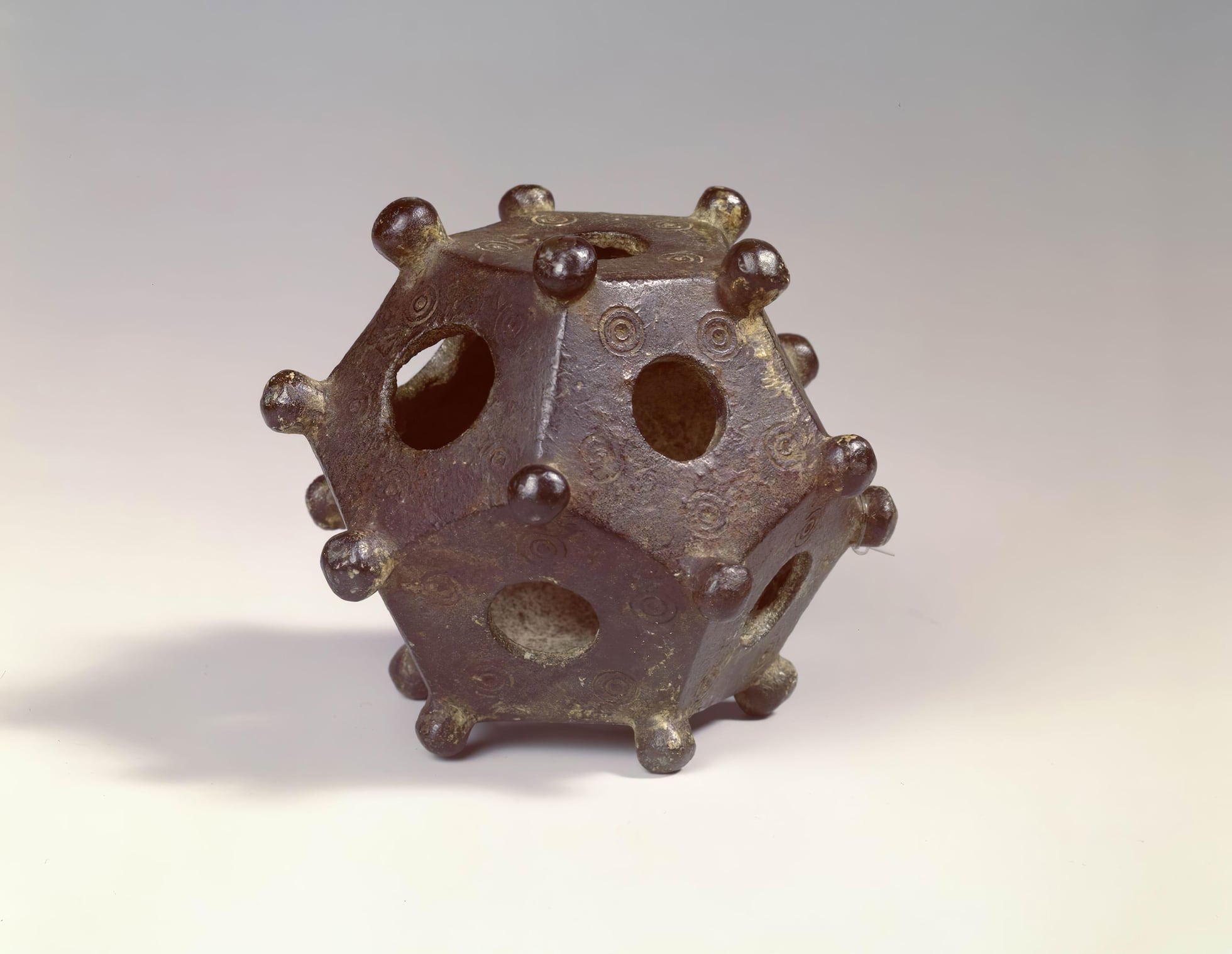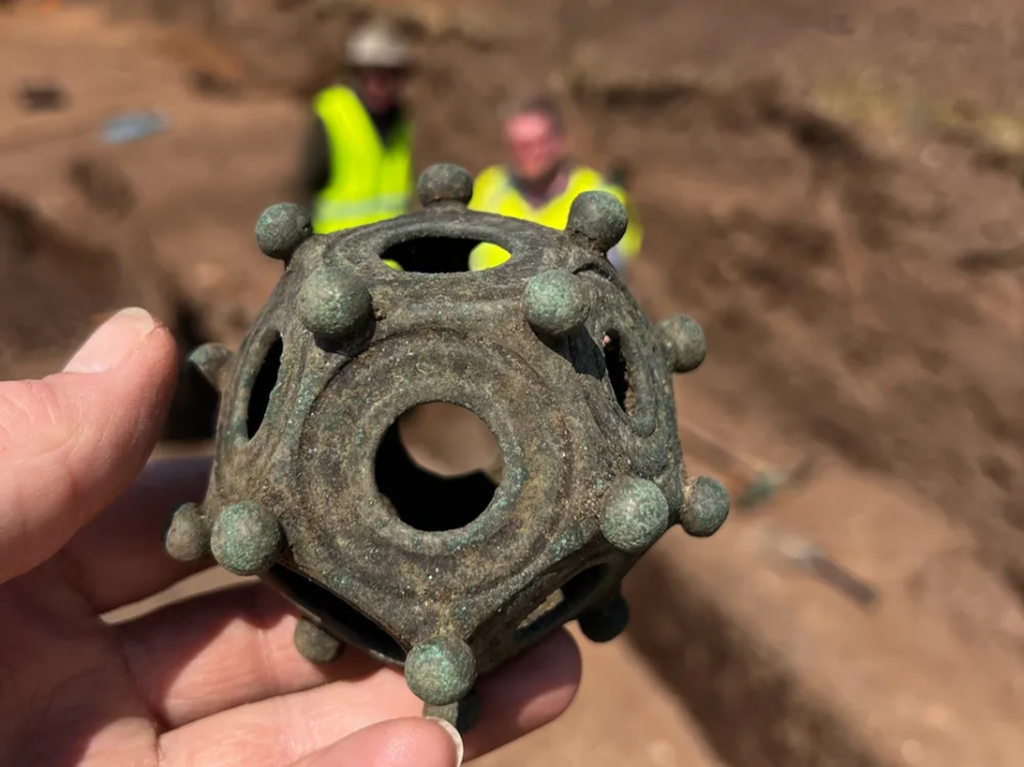Which the Romans definitely had and used.
Sure, but you’re hypothesising a bell that has multiple resonant modes, each with its own nodes, which happen to be the knobs. I think that is an enormously unlikely explanation for this object.
I think if the thing were intended to be suspended by one or more of the knobs, the knobs would instead be rings.
It’s possible that by rotating the dodecahedron and keeping track of the holes, that this allowed the Roman to more easily work with the A5 group.
Maybe they just needed more cowbell.
It is interesting how reluctant we all are to accept an explanation of ‘its purpose is merely to be the thing it is’ - and yet to this day humans fill their lives with objects that have no particular utility value beyond ornament, sentiment, ceremony or status. It’s not strange that this might just be a curiosity, ornament, trophy or some ceremonial knickknack.
Hmmm…did the AA-equivalent organizations at that time have a 12 Step Program? Seems might coincidental.
Well, not all of us. That’s the explanation I favour.
That’s certainly a plausible explanation, but as mentioned, it’s also a sort of cop-out; the default explanation for anything that is not understood is that is a ceremonial object (brilliantly parodied in Motel of the Mysteries). In the case of the dodecahedrons, various aspects of the design like the knobs and the slightly differently sized holes are consistent across all examples and just SEEM like they serve some practical purpose.
They do, and that’s the compelling thing that drives all of this discussion I suppose. I think the details of the knobs and holes are probably meaningful or necessary in some way, maybe just in the same way that the large, squarish heads of Funko Pops are apparently a necessary detail of the design choices of those doodads, but as discussed, the dodecahedra can’t really be tools because where are the simpler versions, the precursor versions and the examples made from other materials (and the worn/used examples)?
You may be forgetting how precious manufactured objects were before industrialism and mass production, when most things required the time and work of a skilled artisan. Knickknacks might be made of wood or clay but bronze wasn’t cheap; copper was valuable enough to be the basis for minor coins.
I’m not sure what your point is; bronze was used for ornaments by the Romans; the fact that these objects are found only in bronze may indicate that the material was a necessary detail (like the knobs are a necessary detail, apparently) - that is, being made of bronze might have been an important part of making it what it is, whatever it is.
Just not sure what you think I might be forgetting?
This is not actually how it works in archaeology, but even if it were the case - an awful lot of stuff even up to the fairly recent past really were ceremonial objects of one sort or another. Because ceremony and ritual consumed an awful lot of human time.
Roman Imperial bronze coins (they didn’t have copper ones AFAIK. ETA - scratch that, I see the as was later copper not bronze) were not bullion coins, they were token coins. Their worth wasn’t tied to their metal worth the way their gold and silver coins (nominally) were. The Romans used bronze for lots of relatively cheap things.
Some of the theories are so weird, it makes me want to come up with my own weird theory.
They were eel sorters. They stuck eels through the holes to gauge their size. They were made of bronze to resist corrosion from repeated contact with wet eels. Eels are soft, so they didn’t cause wear to the dodecahedrons. The knobs raised the dodecahedron off the sorting surface so the eel-slime could drain off. Case closed. ![]()
I like the cypher explanation upthread, though I wonder what was suppose to happen if an enemy soldier caught a messenger (or more than one messenger) with a dodecahedron and yarn. “Oh this? It’s a ritual object.”
As noted before, IMHO there are.
There are concentric circles that do show up in many of the Dodecahedrons.
The closest to that are the concentric circles that I have seen in Roman dice.

AFAGAIR (As far as Google AI reports ![]() ) in ancient Rome, concentric circles held symbolic meaning related to eternity, cycles, unity, and protection.
) in ancient Rome, concentric circles held symbolic meaning related to eternity, cycles, unity, and protection.
And as noted earlier, in one rare Roman Icosahedron, the circles around peeps do show up too)

I like that story, too. Although “ritual object” or “popular knock knack” seen at least as likely. But the cypher one is cool, and pretty plausible.
One thing I am still curious about - and it was a detail that was contributory to my adherence to the notion of these being an apprentice’s test piece (don’t worry, I’m not going back there); does Latin share the same ambiguities as English in the following respect:
Note the engraved/embossed markings on these two different examples:


In English, either of them could be described as: ‘each face having a hole of different sizes, surrounded by engraved circles’ or endless variants of that sort of description (ie encircled by/bordered by/arranged around etc), such that, English is ambiguous about this by default, unless additional qualifiers such as ‘concentric with the hole’ in the former case or ‘between the centre of the face and each vertex’ in the latter.
Is Latin similarly ambiguous for any set of reasonable written or spoken, terse descriptions of these objects?
As I say, I don’t adhere to the apprentice-piece explanation any more, but I am wondering if it’s possible that some of the examples were made according to a verbal description rather than a model or drawing.
Are the dodecahedra solid cast with the circles engraved/embossed onto them? Or does it appear that they were cast as a framework with the circles welded into the frame?
They are cast with faces - I think I am right in saying that it’s not abundantly clear whether the holes were cut after casting or merely refined; same with the engravings I believe.
I can certainly buy the “ritual object” theory. But those knobs look like they have a utilitarian purpose. In other words, without the knobs, the object would have been deemed to have a lesser purpose.
